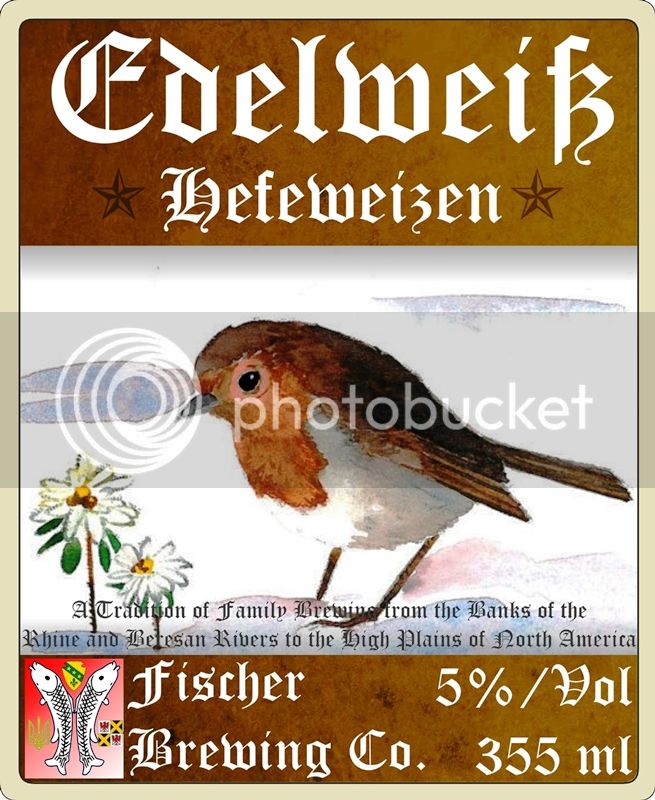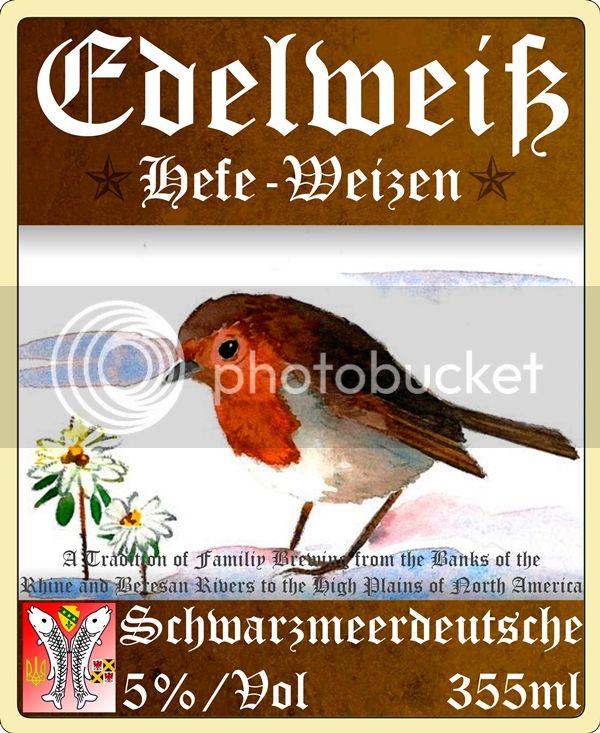TasunkaWitko
Well-Known Member
Edelweiß - Recipe from Brooklyn Brew Shop - Tips and Advice
My next brew is going to be one of those recipes that Ive wanted to try since the moment I read about it - Edelweiß (Edelweiss), from Brooklyn Brew Shops Beer Making Book:
http://brooklynbrewshop.com/beermakingbook
Here is the enticing description that is found in the book:
After reading something like that, I figured that I had better try this recipe at least once in my lifetime. Its the beginning of summer now, rather than spring, but I am guessing that will not be a problem.
The grain bill is pretty simple and straightforward, filled with German malts; Pale Wheat, Pilsner, Munich and Melanoidin are all that is needed for this recipe.
The hops for this recipe are probably a bit off the traditional path - it uses Centennial hops for bittering and flavour, then Amarillo hops for aroma. For this first attempt, I will stick with the hops that are prescribed by the recipe; however, when I make this in the future, I will be looking to take this beer back across the Atlantic. Im guessing that noble hops such as Tettnanger or possibly Hallertau would be most appropriate, but will see what I can find out before making any hard decisions.
As far as yeast is concerned, I had two choices available to me - Mangrove Jacks M20 Bavarian Wheat and DanStars Munich. I decided to go with the M20, and well see how things turn out.
For those who are into stats, I plugged this recipe into Brewers Friend and came up with this, using German Wheat Beer/Weissbeer as the yardstick by which to measure it.
OG - 1.057 (0.02 over style)
FG - 1.014 (0.01 over style)
ABV - 5.6% (conforms to style)
IBU - 11.00 (conforms to style)
SRM - 5.50 (conforms to style)
Im no expert, but this looks pretty darn close to "style" to me; the very slight variations might have something to do with the mash guidelines that I entered, which are often just a guess on my part.
The unique thing about this beer is that it is bottled three days after pitching the yeast, with no added priming sugar. The last of the fermentation and resulting carbonation take place using the remaining residual sugars in the wort, a process that supposedly contributes to the special characteristics of this wheat ale. Well see how it turns out.
Here is the label that I came up with for this brewing session -

I had considered a few classic Alpine scenes, but this one struck close to home, and I decided to go with it. I like the image of this European robin - robins are a harbinger of spring here in Montana - anxiously waiting for spring (which is often late in Montana) as an Edelweiß flower emerges from the snow.
I contacted Brooklyn Brew Shop with a couple of questions about brewing this beer, and as soon as I hear back from them, I will get started. If anyone is interested in trying this recipe, feel free to shoot me a PM and I can email it to you; I am reluctant to post it on the open forum, as it is not my recipe. I would also recommend picking up this book, as well as the second book from BBS - Make Some Beer. Both of these books have a lot of good information for the beginning homebrewer, with plenty of room to grow; additionally, I find the recipes to be quite inspiring, with interesting creativity and enthusiastic descriptions. Ive been happy with all of the ones that Ive tried so far.
As always, I welcome feedback and suggestions with this - I consider myself to be very much a beginning brewer, and batting ideas around is always good for learning new things. Please feel free to chime in, follow along or otherwise participate in the discussion.
More as it happens, etc. &c .
Ron
My next brew is going to be one of those recipes that Ive wanted to try since the moment I read about it - Edelweiß (Edelweiss), from Brooklyn Brew Shops Beer Making Book:
http://brooklynbrewshop.com/beermakingbook
Here is the enticing description that is found in the book:
This is our take on Edelweiss, the somewhat obscure German style of hefeweizen, a cloudy wheat beer. It gets bottled early, just a few days after adding the yeast, and without any extra honey or syrup. The beer finishes fermenting in the bottle and gathers a light carbonation. The result is a floral, yeasty beer that ends up on the sweeter side of the wheat beer spectrum - more bubblegum and banana than spicy clove. This beer is soft and gentle, making it ideal for springtime.
After reading something like that, I figured that I had better try this recipe at least once in my lifetime. Its the beginning of summer now, rather than spring, but I am guessing that will not be a problem.
The grain bill is pretty simple and straightforward, filled with German malts; Pale Wheat, Pilsner, Munich and Melanoidin are all that is needed for this recipe.
The hops for this recipe are probably a bit off the traditional path - it uses Centennial hops for bittering and flavour, then Amarillo hops for aroma. For this first attempt, I will stick with the hops that are prescribed by the recipe; however, when I make this in the future, I will be looking to take this beer back across the Atlantic. Im guessing that noble hops such as Tettnanger or possibly Hallertau would be most appropriate, but will see what I can find out before making any hard decisions.
As far as yeast is concerned, I had two choices available to me - Mangrove Jacks M20 Bavarian Wheat and DanStars Munich. I decided to go with the M20, and well see how things turn out.
For those who are into stats, I plugged this recipe into Brewers Friend and came up with this, using German Wheat Beer/Weissbeer as the yardstick by which to measure it.
OG - 1.057 (0.02 over style)
FG - 1.014 (0.01 over style)
ABV - 5.6% (conforms to style)
IBU - 11.00 (conforms to style)
SRM - 5.50 (conforms to style)
Im no expert, but this looks pretty darn close to "style" to me; the very slight variations might have something to do with the mash guidelines that I entered, which are often just a guess on my part.
The unique thing about this beer is that it is bottled three days after pitching the yeast, with no added priming sugar. The last of the fermentation and resulting carbonation take place using the remaining residual sugars in the wort, a process that supposedly contributes to the special characteristics of this wheat ale. Well see how it turns out.
Here is the label that I came up with for this brewing session -

I had considered a few classic Alpine scenes, but this one struck close to home, and I decided to go with it. I like the image of this European robin - robins are a harbinger of spring here in Montana - anxiously waiting for spring (which is often late in Montana) as an Edelweiß flower emerges from the snow.
I contacted Brooklyn Brew Shop with a couple of questions about brewing this beer, and as soon as I hear back from them, I will get started. If anyone is interested in trying this recipe, feel free to shoot me a PM and I can email it to you; I am reluctant to post it on the open forum, as it is not my recipe. I would also recommend picking up this book, as well as the second book from BBS - Make Some Beer. Both of these books have a lot of good information for the beginning homebrewer, with plenty of room to grow; additionally, I find the recipes to be quite inspiring, with interesting creativity and enthusiastic descriptions. Ive been happy with all of the ones that Ive tried so far.
As always, I welcome feedback and suggestions with this - I consider myself to be very much a beginning brewer, and batting ideas around is always good for learning new things. Please feel free to chime in, follow along or otherwise participate in the discussion.
More as it happens, etc. &c .
Ron




